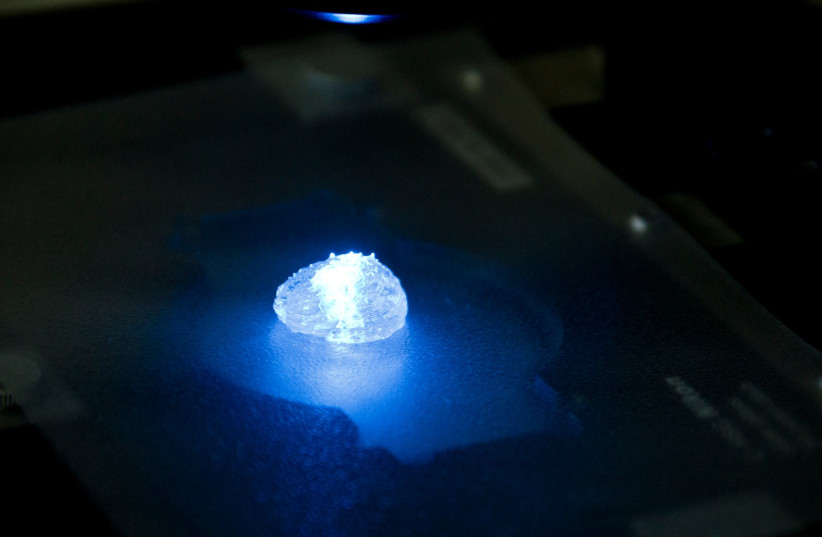Drugs that kill cells in solid cancers can be wrapped in a “nanometric package” instead of being dispersed throughout the the body, damaging healthy tissues and nausea due to damage of intestinal tissue, hair loss and more serious side effects.
Researchers at the Technion-Israel Institute of Technology in Haifa have developed an automatic system for the design and preparation of stabilizing materials to produce such a “nanometric package” – a platform for delivering drugs directly to cancer centers in the body.
<br>Technion research on nanomaterials
In an article just published in the journal Biomaterials under the title “Automated discovery of nanomaterials via drug aggregation induced emission,” the researchers report that by using their innovative system, they developed the necessary materials to create the platform and even showed in preclinical experiments that it is effective against solid malignancies.
The research was conducted in the Faculty of Biomedical Engineering under the leadership of doctoral student Yuval Harris and lab director Dr. Hagit Sason-Bauer, who worked with Assistant Prof. Yosi Shamay, an expert in biomedical engineering for anticancer nanomedicine and nanoinformatics.

Anti-cancer drugs such as chemotherapy and kinase inhibitors are designed to destroy cancer cells, but one of their main problems is that only a small fraction of the medicinal substance reaches its destination – the cancer cells themselves. The rest can damage healthy tissues.
<br>Nanomedicine delivery package
About 40 nanomedicine products, including the Pfizer and Moderna vaccines against the COVID-19 virus, have already been approved by the US Food and Drug Administration (FDA), but the development of such transport capsules is a complicated technological challenge. Many research groups around the world are working to improve them.
The Technion researchers present a breakthrough in this field – an automated process for developing optimal materials for the preparation of these capsules. The process is used both as a robot-chemist that synthesizes new materials and as a robot-pharmacist that formulates them into nanocapsules containing the anti-cancer drug.
“The technology we developed,” explained Shamay, “is based on an interesting phenomenon called aggregation-induced emission (AIE) – light emission based on the aggregation state of the drug. This effect means that in its solid or aggregated form, it emits a lot of light energy, but when it is soluble or stable in a capsule, it emits almost no light. Out of about 40 drugs we tested, we found 10 new drugs in which this effect occurs. They can be used as selection criteria in the automated process.”
The automatic system developed he and his team developed makes it possible to know – according to the light energy emitted from the drug –which substance makes the best nanoparticles for that drug. This technique led to the discovery of a new stabilizing material whose properties give it many advantages over the existing materials used to create nanometric capsules for drug delivery.
<br><br>A new material
The researchers discovered that the new material is better in various aspects to existing materials including efficiency, safety, the uniformity of the particles that make it up, stability over time and the number of drugs that can be “wrapped” and stabilized with it. All of these traits make it a super stabilizer suitable for the ever-expanding field of treatment using nanoscale capsules.
The new material, named R595, was created in a “green” chemical reaction that does not require the use of polluting and toxic organic solvents. It has a very high efficiency of drug loading (90%), which makes it possible to predict the treatment’s effectiveness. In preclinical trials, the capsule was effective in the treatment of solid tumors caused by a mutation common in lung cancer, pancreatic cancer and intestinal cancer.
